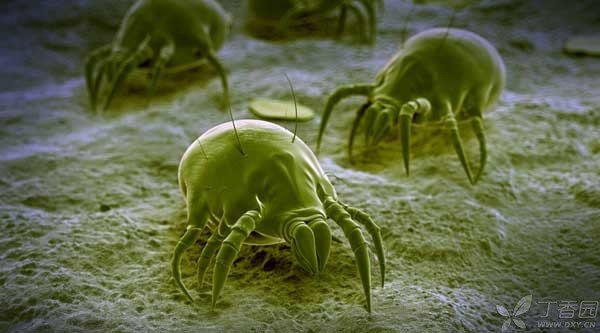
As the weather gradually turned cold, many families began to change their sheets and bedding.
The storage of a spring and summer bedding brings us not only warmth and comfort in winter, but also some very annoying small creatures, such as dust mites.
Friends with allergies must be familiar with this small creature. The allergic symptoms caused by them can make people sleepless at night, asthma, sneezing all night long, large papules and a lot of nasal mucus and tears are all very disturbing.
Where do dust mites generally exist?
Dust mites are one of the most closely related mites in the mite family. They live in almost every corner of our room, such as pillows, bedding, sofas and clothes. They are full of dust mites and even breed in flour mills, cotton mills and food warehouses.
At ordinary times, dandruff, flour in food, even powdery substances such as fungi that fall off our bodies can become their food.
The suitable living environment of dust mites is similar to that of human beings, and its fecundity is amazing. Every three weeks is a breeding cycle, which can lay 25-50 eggs at a time. Generally speaking, the peak breeding season of dust mites is in summer.
Therefore, those autumn and winter clothes that have passed through a summer, if they are directly worn without washing and drying, the number of dust mites on your body may be tens of thousands.

How can dust mites lead to human allergy?
Dust mite is an important allergen of human allergy. Whether it is the body, secretion or excrement of dust mite, it can cause strong allergic reaction of allergic patients.
The most common allergic reactions include dust mite asthma, allergic rhinitis and allergic dermatitis. 80% of these allergic reactions are related to dust mites.
The mechanism of dust mites causing human allergy is not complicated:
After the allergen comes into contact with the human body, it is like throwing a firecracker into an oil depot. The allergen is just mentioned, the body, secretion or excrement of dust mites, and the oil depot refers to the human immune system.
The immune system produces antibodies under the induction of allergens, which makes human cells produce a series of biochemical reactions, resulting in capillary dilatation, increased vascular permeability, increased gland secretion and tissue edema.
The specific manifestations are typical symptoms such as runny nose, sneezing, dyspnea and even anaphylactic shock.
What can I do?
Radical treatment of dust mite allergy is very difficult and may require up to 1 to 2 years of injection for desensitization treatment.
Therefore, for patients whose allergy is not serious, the most recommended method is to reduce contact with dust mites, or dust mite bodies, excreta, etc. in daily life.
1. What should prevention be done?
Attention should be paid to clean environment, open more windows for ventilation, and keep indoor air circulating and dry.
When entering autumn and winter, bedding stored for several months is simply a paradise for dust mites to breed. Before taking it out again for use, bedding and clothes should be washed and dried before use.
It is better not to cover blankets on the bed of dust mite allergy patients, and it is better not to place tapestries and other objects that are easy to accumulate dust on the wall.
2. What should I do after allergy?
Patients should seek medical treatment in time after allergic reactions occur. Under the guidance of doctors, they can take orally antiallergic drugs such as loratadine and chlorpheniramine. Asthma patients can also use antiasthmatic sprays to relieve symptoms.
Responsible Editor: Cat Capricorn
Copyright of Clove Garden. No reprinting is allowed without permission.
